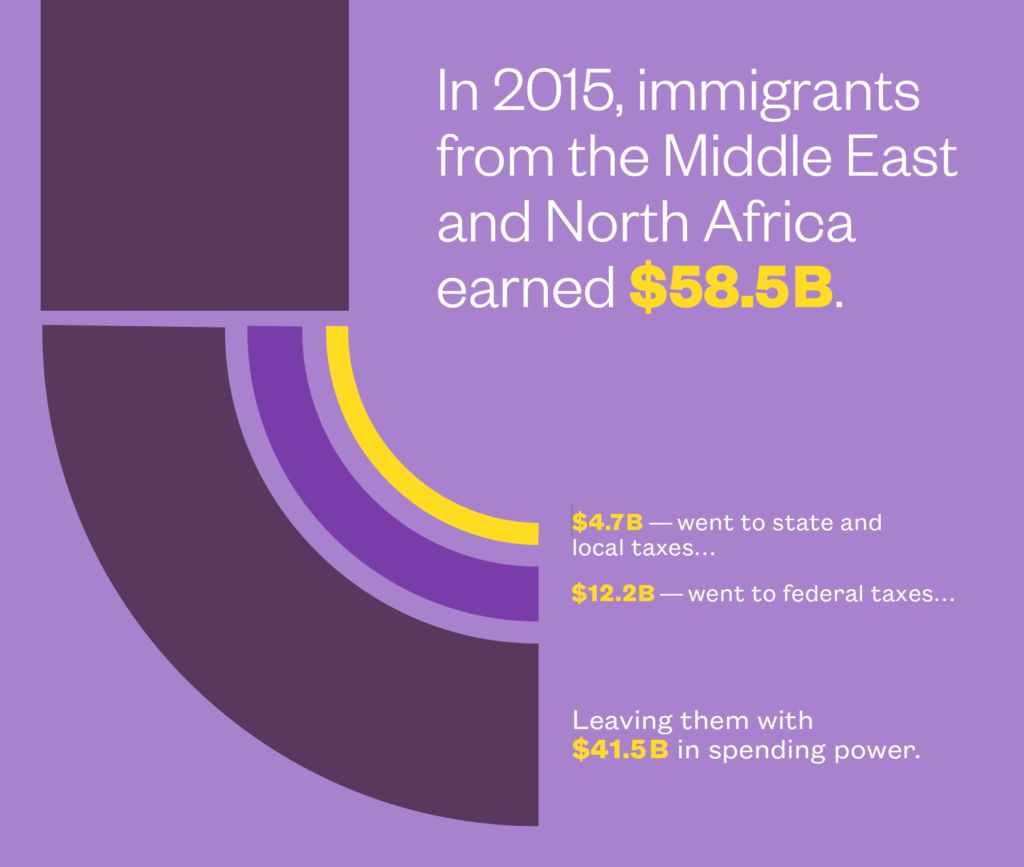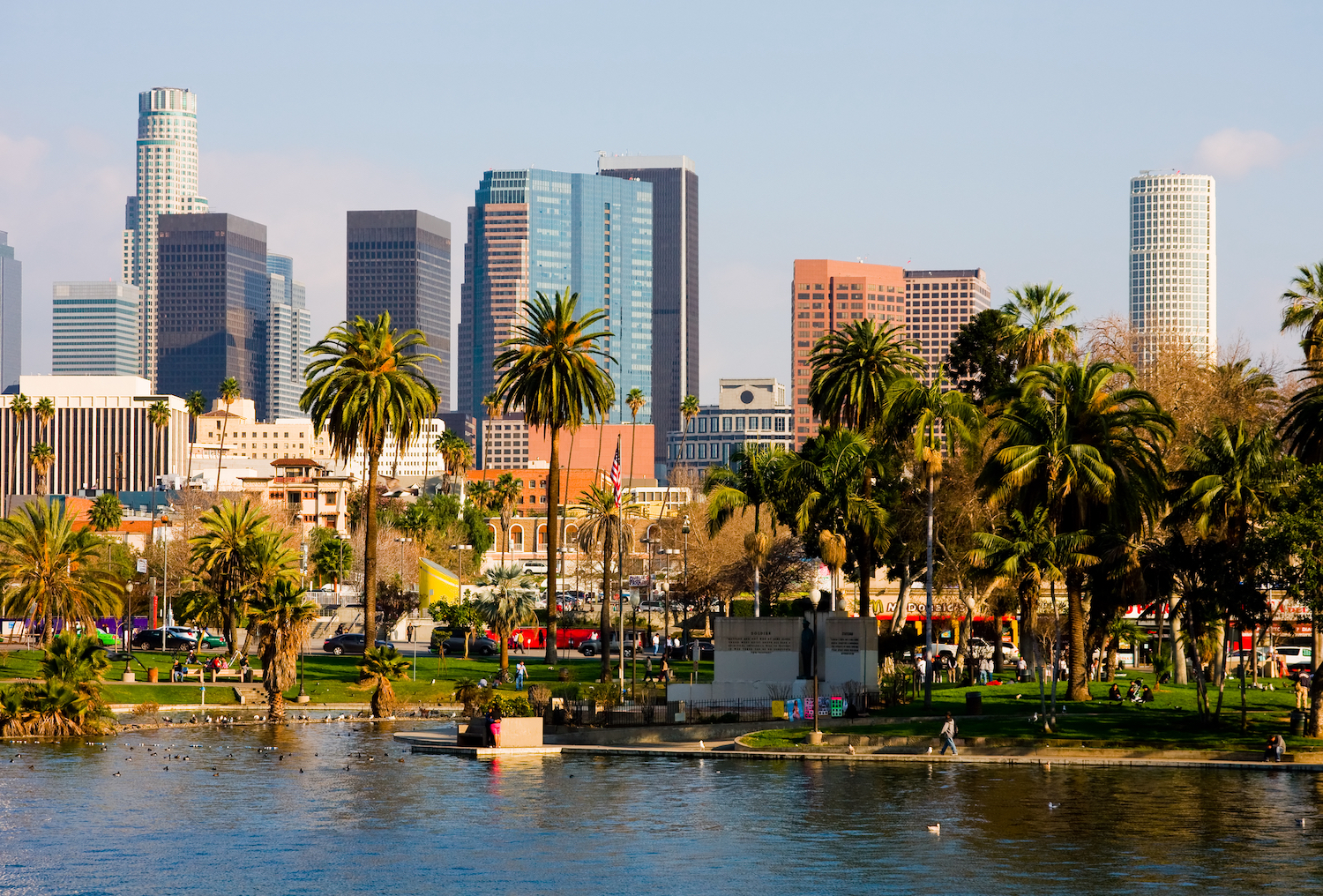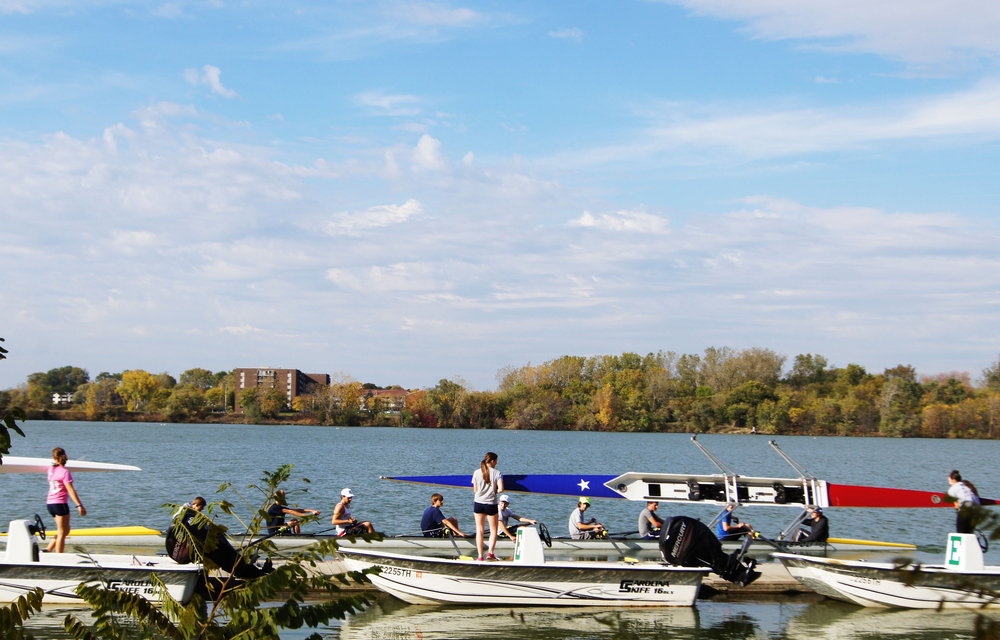Power of the Purse: Middle-Easterners and North Africans in America
Date: January 27, 2019

Two years ago, on January 27, 2017, the Trump administration enacted a travel ban, which attempted to prevent visitors and immigrants from seven predominantly Muslim countries from coming to the United States. After the ban was challenged in court, the ban was revised and today’s iteration prevents new visitors and immigrants from five predominantly Muslim countries, including Iran, Libya, Somalia, Syria, and Yemen, in addition to North Korea and Venezuela.
The majority of the focus on this policy has been on national security. Less attention has been paid the very real economic consequences the policy will have, particularly in certain metro areas and states throughout the country where many MENA immigrants have settled. A new report from New American Economy reflects the ability of these communities to integrate and succeed in the United States.
Key findings from the report, Power of the Purse: Middle-Easterners and North Africans in America, includes:
- In 2015 alone, households led by MENA immigrants earned $58.5 billion in total income and contributed $17 billion in tax revenues to federal, state, and local governments.
- MENA immigrants are playing a growing role supporting the economies of several small and mid-sized cities in the Midwest and Southeast. In 2015, the top 10 metropolitan areas where MENA immigrants made up the largest share of the population included Detroit, Michigan; Ann Arbor, Michigan; and Nashville, Tennessee. In Detroit alone, MENA immigrants are estimated to own the majority of convenience stores, as well as 90 percent of the area’s gas stations, providing a valuable source of jobs for local workers.
- The contributions Middle Eastern and North African (MENA) immigrants make as taxpayers support the growth of many key cities, including Los Angeles, New York, Newark, Jersey City, San Francisco, Chicago, Dallas-Fort Worth, Detroit, San Jose, San Diego, Washington, D.C., Boston, Houston, and Nashville.
- MENA immigrants have some of the highest levels of educational attainment in the country, with a heavy focus in science, technology, engineering, and math. Of the MENA population with a college degree, 46.6 percent studied a STEM discipline, a far higher share than the U.S. population overall.
- MENA immigrants are well positioned to fill gaps in our workforce as the baby boomers retire. In 2015, more than two out of every three MENA immigrants—69.0 percent—were in the prime of their working years, falling between the ages of 25 and 64. Only around half of the U.S.-born population—49.4 percent—fell into that age bracket.

Within the report, readers will also meet MENA immigrants from across the country who have become integral parts of their local communities, like Dr. Mehdi Yazdanpanah. A native of Iran, Dr. Yazdanpanah came to the United States on a student visa to pursue a Ph.D. in electrical engineering at the University of Louisville. In 2007, Yazdanpanah founded a company in Kentucky, NaugaNeedles, which was based on his research. The technology is used by hundreds of research groups in industries ranging from semiconductors to medicine. NaugaNeedles employs a staff that is half native-born American and fuels work for several American contractors.
This report is part of an NAE series, “Power of the Purse,” showing the contributions from different immigrant groups, including Asian American and Pacific Islanders, sub-Saharan Africans, and Hispanics.






